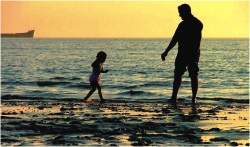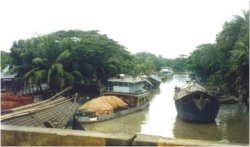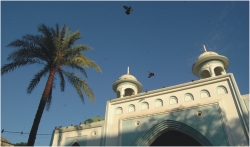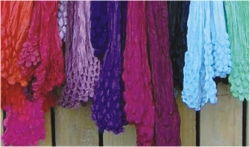 |
|
 |
|
 |
|
 |
|
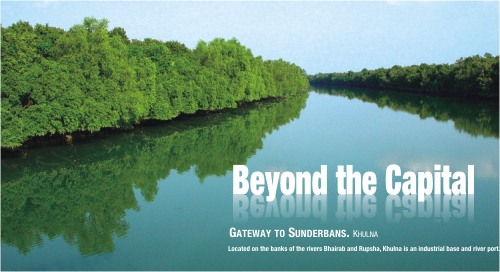
Daughter of The Bay. Chittagong
Chittagong is our port city which has attracted the maverick from far away countries since time immemorial. It has a landscape that breaks the monotony … albeit of the beautiful plains. It is our commercial capital and the second largest metropolis. Chittagong is moving ahead…
Barisal is the place where the great poet Jibanananda Das was born. The mellow beauty of Rupashi Bangla overwhelmed him, but poet Nazrul found something very different in Barisal…City of The Saint. Sylhet
Sylhet brings us back to the uncommon terrain. The mystics and saints found it an ideal place for meditation. In modern days it is known for products like tea, cane and orange and, of course, for its London connection. The enterprising people of Sylhet have their own enclave in London.
Rajshahi is the main urban centre in the northern region.The mighty Padma has had a profound influence on the city and its people. The Padma is drying up, but Rajshahi today is seeking a new identity as a modern metropolis.Chittagong
Port city and commercial hubShahed I Khan
Chittagong, with its beautiful landscape and rugged terrain, is the commercial hub and the premier seaport of the country. It has a long history of interaction with people of both Arab and European origin. However, it is now on the verge of becoming a modern metropolis.
The distant smudges in the horizon take shapes, as the coastline nears. The hills, the Chittagong collectorate building become visible. This welcome sight has greeted many a weary marine and filled their hearts with joy. They heave a sigh of relief, as have many before them, as the ship enters the safety of the port that is Chittagong. Chittagong still retains its old features though ports around have surrendered to the vagaries of nature & manmade disasters. It continues to serve people of the region as it has done through the ages.
The major international seaport of the country is a natural port on the right bank and the protected loop of the Karnaphuli River. It handles almost all of Bangladesh's import and export. It's the commercial capital of Bangladesh. The shipping world, the import/export businesses, ship breaking, steel, gas, petroleum, heavy industries, and other industries have grown up here. Agrabad, adjacent to the port, is now the prime commercial area in modern Chittagong, the wholesale and retail trade centres in the city being near Chaktai on the abandoned bed of the river Karnaphuli.
The necessity of connecting the port in Chittagong to the tea gardens of Assam led to the construction of railways in Chittagong in1895. The Assam-Bengal Railway Company was formed in London. Thereafter other lines were laid connecting the town and the district to the rest of Bangladesh.
The Grand Trunk Road of Sher Shah connects the city with Dhaka and other cities of Bangladesh.
The new road connecting the port with China, Myanmar through Cox's Bazar and the upcoming deep seaport, off the port, further enhance the importance of the port in the region with the vast landlocked resources and rich hinterland of China, Myanmar, Chittagong Hill tracts and the south eastern states of India.
Chittagong is well connected with the rest of Bangladesh by a network of coastal water routes and most of the bulk cargo goes inland by the river route. Every day launches and steamers carry passengers to nearby islands like Sandwip, Kutubdia, Maheshkhali and other inland points.
The new Shah Amanat International Airport situated on the bank of the river Karnaphuli is eleven kilometers from the city centre. Regular flights now connect Chittagong by air to international destinations.
Chittagong Port at dusk
Travellers and historians have recorded Arab contacts with Chittagong as far back as the ninth century AD. Apart from the merchants, many sufis and saints also came and settled here, leaving an indelible mark on the people and the place. The frequent interaction between people of different races, religions and cultures, which trade and settlement entailed, left a permanent impression on the physical features, dialect and religions of the people. High cheekbones, narrow faces and hooknoses proclaim Arab lineage, while the muscular, bull- necked, strong-featured and thick-bearded are the descendants of the Afghan and the Mughal soldiers. There are a good number of Arabic words in the dialect spoken in Chittagong; besides many places have Arabic names as well. The names of places like Alkaran (Al-qarn), or Sulek Bahar (Sulukul Bakulia) are of Arab derivation.
The descendants of the Portuguese are still seen in Chittagong. An area in the city known as Firingi Bazaar is named after them. The most significant contribution of the Portuguese is the presence of many Portuguese words in the Bengali language in daily use even now.
Standing at the doorway of the region, it has also welcomed many saints & preachers and is also known as the land of saints, dervishes and fakirs. Several mosques, shrines, temples bear testimony to their presence in the city.
The shrine of Hazrat Bayazid Bostami is one of the most revered places in Chittagong. The pond in the shrine has several hundred tortoises. It is traditionally believed that the tortoises are descendants of the evil spirits whose ancestors, having incurred the wrath of the great saint, were transformed into tortoises.
Hazrat Badar Aulia or Badar Pir was another great saint and preacher. According to the tradition they drove away the evil spirits by burning a lamp (chati), hence the name Chatigram. The hill on top of which the Chati was lit, called Cheragee Pahar,is now in the Jamal Khan residential area of the city.
Hazrat Shah Amanat, was another great saint. The dargah lies to the east of Laldighi. The shrine of Chashma-i-Hazrat Shaikh Farid is in Nasirabad near Solashahar Railway Station.
Chittagong continued to be an influential centre of Islamic ideology, theology, art, architecture, and influence in Bengal, ever since Islam's introduction in the region over 1,200 years ago. Islamic centres and institutions adorn the city. They include the 17th-century Mughal Shahi Jameh Masjid in Anderkilla, the beautiful multi-domed Chandanpura Masjid, the new and magnificent Jamaat-ul-Falah Masjid etc.
Hindu shrines at Sitakunda and other areas and the Buddhist temples in greater Chittagong speak of the Buddhist influence on the region in the past.
The lone Ethnological Museum of Bangladesh has interesting displays on Bangladesh's indigenous peoples.
The Chittagong War Cemetery has the graves of soldiers of the Allied Forces who laid down their lives on the Indo-Burmese front during World War II. It speaks of another period in Chittagong's history, the British period.
Chittagong University, Chittagong University of Engineering &Technology, International Islamic University of Chittagong, Chittagong College, other universities, the Mercantile Marine Academy, colleges, schools, religious education centres and technical education institutions meet the demand of an ever growing number of students.
Parks and the Botanical Garden add to the civic life in Chittagong.
Only four and half square miles In 1947, the area of the town centred on the small hillocks around the old fortress area in Anderkilla. With rapid industrialisation and development the city has expanded to the west to Hathazari, to Faujdarhat on the north and to Kalurghat on the northeast.
Chittagong has a population of over 3.5 million, and it continues to grow. One of the cleanest cities of Bangladesh, it has a serenity of its own.
With all its pristine beauty, it also has had its share of the ruthless savagery of nature. The violent cyclones, the tidal waves and the regular earthquakes, are part of life in Chittagong.
The author is Chief Executive of a private firm.
